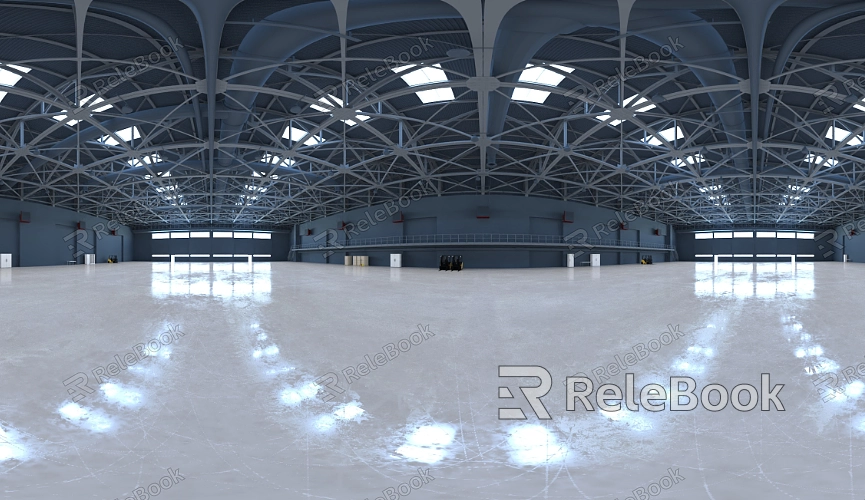Why Does HDR Look Washed Out?
HDR technology allows for a broader range of brightness and color in rendered scenes, making it a popular choice for interior, product, and model rendering to create more realistic images. However, in some instances, HDR images might appear washed out or lose their vibrancy, which is contrary to the expected vivid effect. This article explores common reasons why HDR images can look faded and offers solutions to help designers optimize their rendering outcomes, ensuring color saturation and visual impact.

Improper Color Management
Incorrect Color Space Configuration: HDR images can look significantly different depending on the color space in which they are displayed. If designers fail to configure the color space correctly during rendering and post-processing, the image might appear washed out or unnatural. For example, using mismatched color spaces or converting between HDR and SDR (Standard Dynamic Range) can result in color clipping or reduced saturation. Therefore, ensuring all design software and hardware operate within the same color space, such as sRGB, Adobe RGB, or Rec. 2020, is crucial.
Inadequate Monitor Calibration: If the monitor isn’t accurately calibrated, HDR images may suffer from color distortion or look washed out. Regular calibration with color management tools can ensure color accuracy. Additionally, the quality and color gamut coverage of the monitor itself can impact the appearance of HDR images, making it essential to choose a high-quality monitor capable of accurately displaying HDR content.
Lighting Setup Issues
Improper Ambient Lighting Configuration: The lighting setup in HDR images directly affects the final color output. If the ambient light's color temperature is too low or too high, it can cause the image to look overly warm or cool, leading to a washed-out effect. Adjusting the light's intensity and color temperature to match the scene's needs can effectively prevent this issue. Moreover, relying solely on default lighting settings should be avoided; instead, the lighting should be carefully fine-tuned based on the specific scene to ensure accurate color representation.
Quality of Light Maps: Low-quality light maps or incorrect mapping settings can also impact the color accuracy of HDR images. If the light map’s color data is inaccurate, it might cause the image to look unrealistic or faded. To achieve better results, use high-quality light maps and ensure that their color settings align with the actual scene.
Material and Texture Settings
Incorrect Material Properties: The material settings in HDR images are crucial for color accuracy. If the material's reflectivity, refraction, or other properties are not set correctly, the image might appear washed out. For instance, excessive reflectivity could cause overexposure, while insufficient reflectivity might make the image look dull. Ensuring that the material settings align with the design requirements can effectively prevent such issues.
Low-Quality Textures: The resolution and mapping method of textures also affect the visual outcome of HDR images. If low-resolution textures or incorrect texture mapping settings are used, it can result in unnatural or faded colors in the image. Using high-resolution textures and ensuring correct texture mapping can enhance color accuracy and detail clarity in images. If you're having trouble finding high-quality textures, Relebook offers a wealth of premium texture resources that are worth exploring.

Rendering Engine Configuration
Rendering Engine Misconfiguration: Different rendering engines handle HDR images in various ways, and incorrect settings can lead to color distortion or a washed-out appearance. For example, excessive dynamic range compression or incorrect exposure settings can make the image look less vibrant than expected. Ensuring that the rendering engine settings meet HDR image requirements can maximize color saturation and brightness.
Overprocessing During Post-Production: Color adjustments and brightness control during post-production need to be handled carefully in HDR images. If overdone, it can lead to color distortion or a lifeless appearance. Using professional post-production software and making cautious color adjustments can maintain the natural color and brightness of the image.
Display Device and Compatibility Issues
Limitations of Display Devices: Not all display devices are fully capable of supporting HDR content. If the display device lacks sufficient brightness, contrast, or color gamut, the HDR image might appear less vivid on these devices. This is one reason why some designers may find that HDR images look less vibrant than SDR images on certain devices. To ensure consistent display results, it's best to choose high-quality HDR-supported devices and regularly calibrate them.
Compatibility Problems: Some design software or display devices might not fully support HDR, leading to compatibility issues when processing or displaying HDR images, which can cause color distortion or a washed-out effect. To avoid these problems, it's advisable to choose software and hardware known for their robust HDR support and keep both up to date.
Application Scenarios for HDR Content
Specific Scene Visual Effects: In certain design projects, specific visual effects might cause HDR images to appear washed out. For example, in scenes with low light or soft tones, HDR images may not exhibit the expected vividness. In such cases, designers may need to adjust lighting and material settings or enhance contrast and saturation during post-production to ensure the final image meets visual expectations.
User Perception: Different users might perceive HDR images differently. Some users may prefer images with high contrast and saturation, which can make SDR seem more appealing in certain contexts. When choosing between HDR and SDR, designers should consider the target audience's preferences and the platform where the project will be showcased to provide the best visual experience.
HDR images appearing washed out can be caused by several factors, including color management issues, lighting setups, material and texture quality, rendering engine configurations, and display device limitations. By carefully examining and adjusting these factors, designers can effectively address the problem of washed-out HDR images and ensure optimal color saturation and visual impact across various scenarios. If you’re looking for high-quality HDR images, 3D textures, or 3D model resources, Relebook offers a rich selection that can help you achieve the best results in your design work. Explore Relebook to ensure every project delivers the ideal visual effect.

